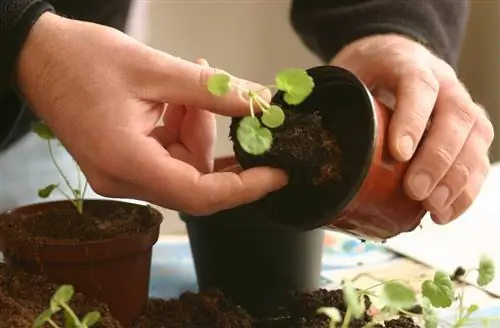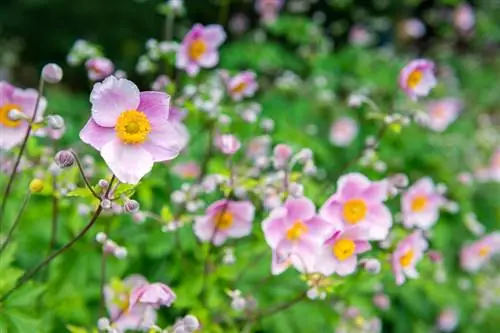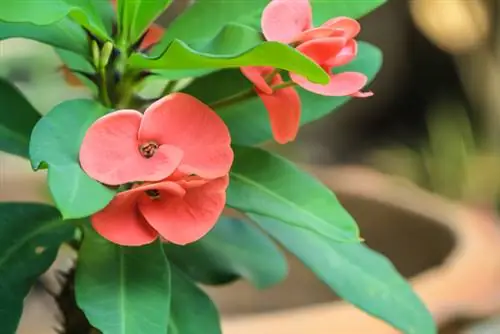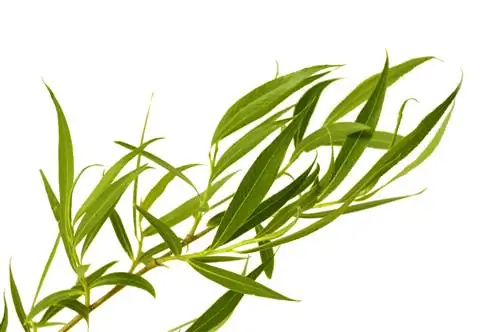- Author admin [email protected].
- Public 2023-12-16 16:46.
- Last modified 2025-01-23 11:20.
Growing cuttings from ivy is child's play. Hardly any plant is as easy to propagate as common ivy. There are two methods available to you for this. This is how you get cuttings from your ivy.
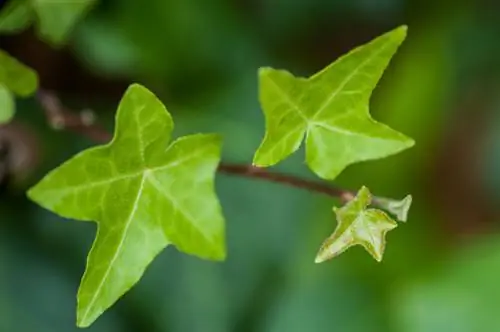
How do you grow ivy cuttings?
To grow ivy offshoots, either cut cuttings or lower shoots. Store cuttings in potting soil or watering holes at around 22 degrees and out of direct sun. When lowering, bend a shoot, score it, place it in the ground and weigh it down until roots emerge.
Pulling offshoots from ivy
To propagate ivy and get new offshoots, either cut cuttings or lower ivy shoots. Both methods are easy to perform and almost always successful.
If you have little space in the house and don't want to worry too much about the offshoots, you should choose lowering for propagation. For cuttings you need a warm, bright but not sunny location in the house.
The best time to take cuttings is from April to September. Then the shoots take root particularly quickly.
Pulling offshoots from cuttings
Cut off the tops of annual shoots. Remove the lower leaves and place the cuttings in prepared pots with potting soil. Make sure that you insert the shoots into the ground the right way up. Alternatively, you can place the cuttings in a glass of water. They usually take root there too.
Place the cuttings in a warm location at around 22 degrees. You should avoid direct sunlight.
Keep the soil moist but not wet. It is recommended to cover the cuttings with transparent plastic bags (€9.00 on Amazon).
Lower ivy
To obtain cuttings from sinkers, bend an ivy shoot down to the ground. Hollow out the soil a little and scratch the shoot lightly with a knife.
Place the scored area in the hollow and cover it with soil. Weight the shoot with a stone or other suitable materials.
Underground roots form at the interface, from which a new offshoot emerges.
Protect young plants from frost
Even if common ivy is absolutely hardy, this only applies to a limited extent for young plants. In the first year after planting outdoors, you should protect them from frost.
For overwintering, place fir branches or brushwood over the plants or spread a blanket of mulch over them.
Watering the ivy in winter is even more important than frost protection. Most plants do not die because of temperatures that are too low during the cold season, but simply dry out because there has been too little rainfall. Water ivy - and especially the young plants - regularly on frost-free days, even in winter.
Tip
To grow cuttings from ivy seeds, you need an older plant that flowers and produces fruit. The highly poisonous seeds require cold treatment before sowing or must be sown immediately after the harvest in spring.


